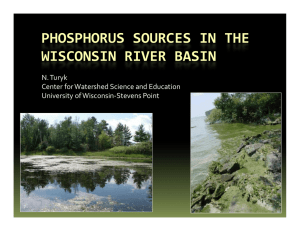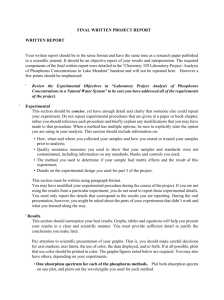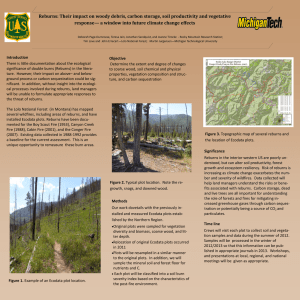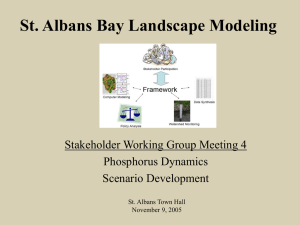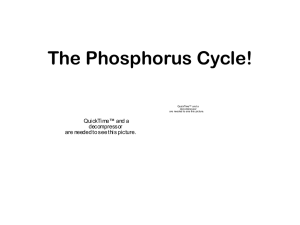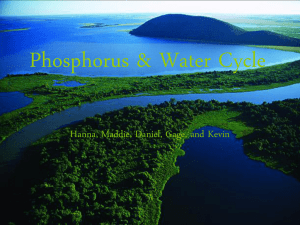APES Review: Evolution, Ecology, Sustainability Vocabulary
advertisement
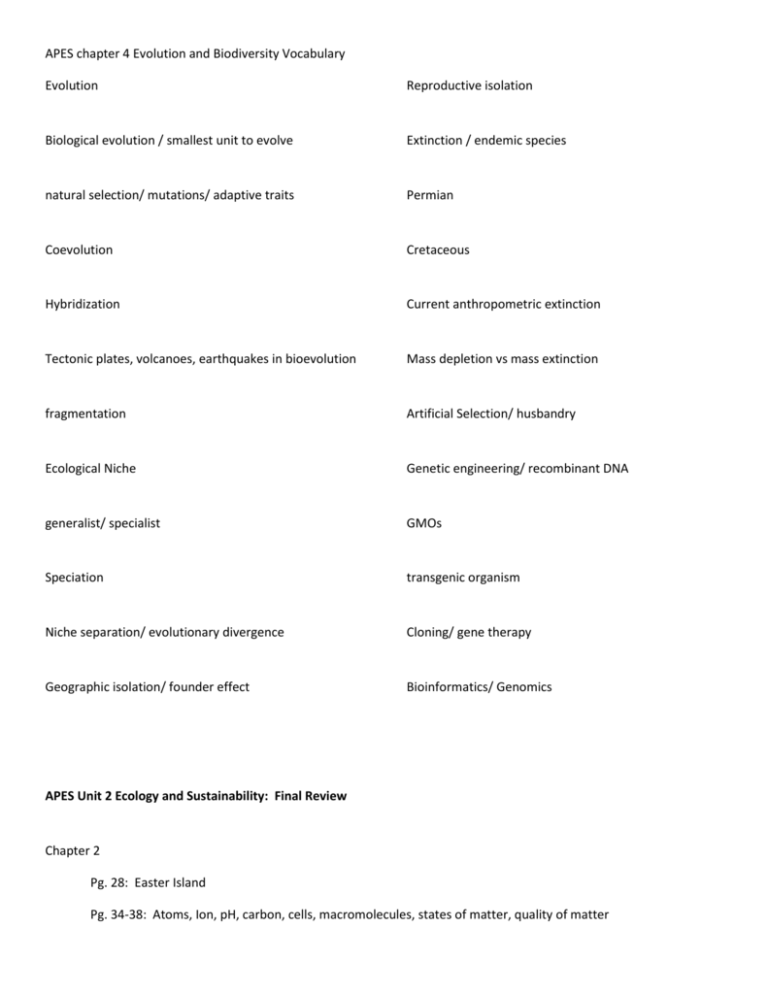
APES chapter 4 Evolution and Biodiversity Vocabulary Evolution Reproductive isolation Biological evolution / smallest unit to evolve Extinction / endemic species natural selection/ mutations/ adaptive traits Permian Coevolution Cretaceous Hybridization Current anthropometric extinction Tectonic plates, volcanoes, earthquakes in bioevolution Mass depletion vs mass extinction fragmentation Artificial Selection/ husbandry Ecological Niche Genetic engineering/ recombinant DNA generalist/ specialist GMOs Speciation transgenic organism Niche separation/ evolutionary divergence Cloning/ gene therapy Geographic isolation/ founder effect Bioinformatics/ Genomics APES Unit 2 Ecology and Sustainability: Final Review Chapter 2 Pg. 28: Easter Island Pg. 34-38: Atoms, Ion, pH, carbon, cells, macromolecules, states of matter, quality of matter Pg. 40-41: Types of Pollutants, Nuclear changes Pg. 44-45: First and Second Laws of Thermodynamics Chapter 3 Pg. 51-53: Basic Ecology and levels of organization Pg. 54: Biosphere Pg. 56-60: Parts of an ecosystem Pg. 61-62: Biodiversity, HIPPO, ecosystem vs. species approach Pg. 63-66: Food chain/ web, Trophic Levels, Gross Primary Productivity (GPP), Net Primary Productivity (NPP) Pg. 67-78: Cycles: Soil, Water, Carbon, Nitrogen, Phosphorus, Sulfur Chapter 4 Pg. 85-86: Natural Selection, Evolution Pg. 86-87: Coevolution, Hybridization, Gene Swapping, Limitations to Natural Selection Pg. 89: Ecological Niches, generalist species, specialist species Pg. 94-97: Genetic Engineering, Genetic Revolution, Synthetic Biology Practice Essay Question: Scientists designed an experiment to learn about the functioning of the hydrological cycle and the phosphorus cycle in a forest. Using two areas of the same size and geological features, they cut all the trees down from one plot and did not disturb the other plot. They were able to accurately measure the amount of water that flowed out of the two plots as well as measure the amounts of phosphorus found in the runoff. a. Describe what the differences would be in the volume of water running off the two plots and give one reason why. Assume that the two areas received the same amounts of precipitation. b. Describe the differences in the levels of phosphorus found in the runoff of the two plots. Assume that both the plots started off with the same amount of phosphorus in the soil. c. Describe one negative effect that might occur in a stream that receives the runoff water and sediment. d. When a tropical rain forest is cut down and used as farmland, the fertility of the soil only lasts a few years. Give an explanation as to why there is little organic matter in rain forest soil and what would happen to that material after deforestation.
